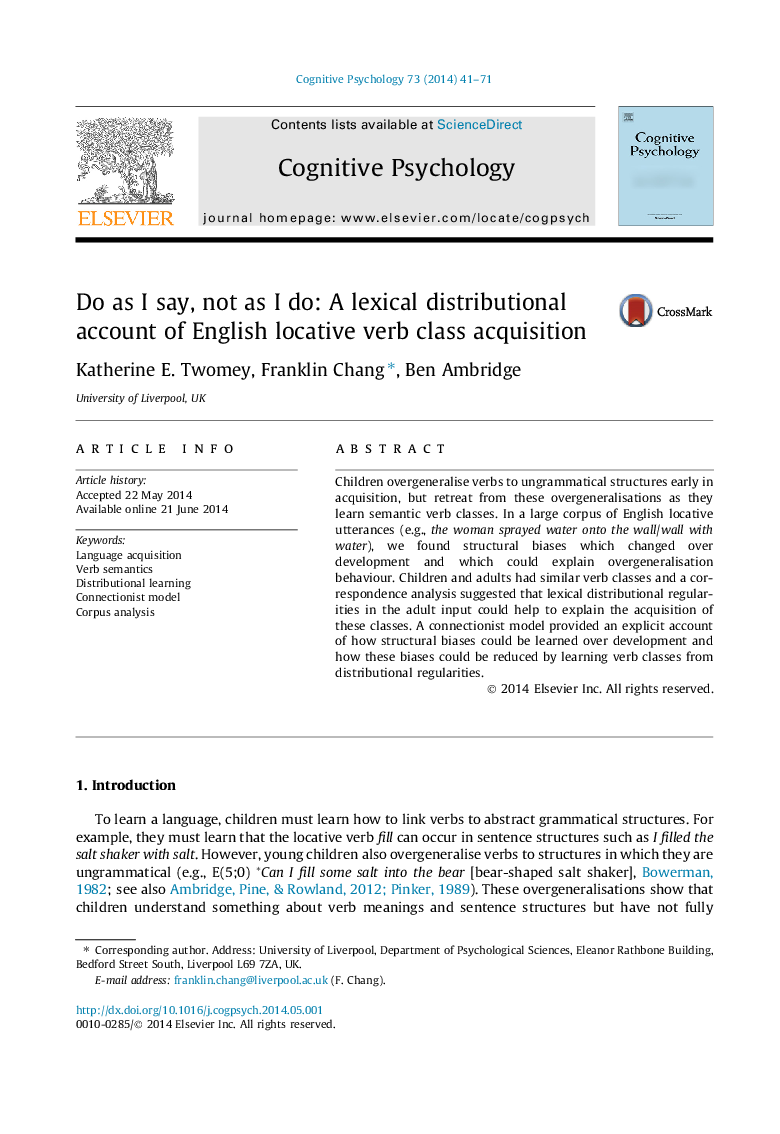| Article ID | Journal | Published Year | Pages | File Type |
|---|---|---|---|---|
| 916838 | Cognitive Psychology | 2014 | 31 Pages |
•Corpus study links locative overgeneralisations to change in verb bias over time.•Distributional correspondence analysis of child input predicts adult verb biases.•Adults learn novel verbs’ structural biases from purely distributional regularities.•Connectionist model exhibits early structural biases, overgeneralisation, verb classes.
Children overgeneralise verbs to ungrammatical structures early in acquisition, but retreat from these overgeneralisations as they learn semantic verb classes. In a large corpus of English locative utterances (e.g., the woman sprayed water onto the wall/wall with water), we found structural biases which changed over development and which could explain overgeneralisation behaviour. Children and adults had similar verb classes and a correspondence analysis suggested that lexical distributional regularities in the adult input could help to explain the acquisition of these classes. A connectionist model provided an explicit account of how structural biases could be learned over development and how these biases could be reduced by learning verb classes from distributional regularities.
